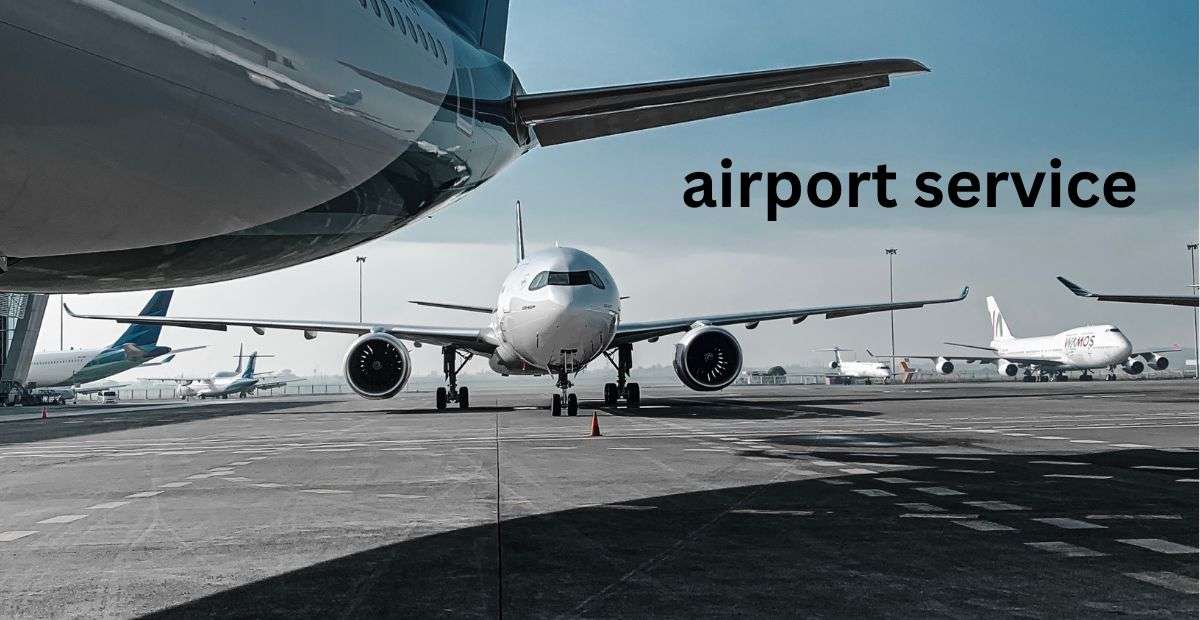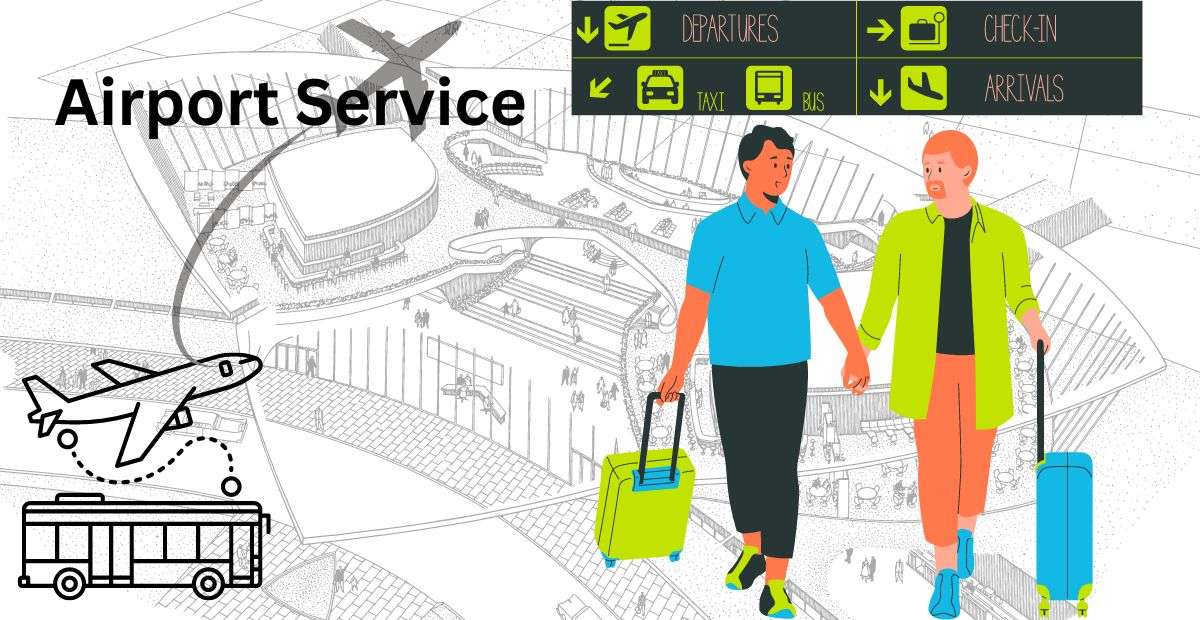Contents
Airport Service
Introduction
Improving airport service is a critical aspect of enhancing the overall travel experience. In this blog post, we’ll delve into how a focus on airport service can lead to significant improvements in customer satisfaction and operational efficiency.

Table of Contents
- Introduction
- Understanding the Importance of Airport Service
- Assessing Current Airport Service Standards
- Identifying Areas for Improvement
- Implementing Changes for Better Airport Service
- Monitoring and Evaluating Progress
- Conclusion
Understanding the Importance of Airport Service
Airport service plays a crucial role in the overall travel experience, from the moment a traveler steps foot into the airport until they reach their final destination. Let’s delve into why airport service is so vital and how it can significantly impact a traveler’s journey.
Efficiency and Convenience
One of the primary reasons airport service is essential is its contribution to efficiency and convenience. Efficient airport services, such as streamlined check-in procedures, speedy security checks, and well-organized boarding processes, ensure that travelers can navigate the airport swiftly. This efficiency is especially crucial for business travelers or those with tight layover schedules, minimizing stress and ensuring a seamless travel experience.
Customer Satisfaction
Superior airport service directly correlates with customer satisfaction. A well-maintained and customer-centric airport environment, coupled with attentive staff and clear signage, enhances the overall satisfaction of travelers. Positive experiences at airports can leave a lasting impression, encouraging repeat visits and positive word-of-mouth recommendations.
Safety and Security
Airport service extends beyond mere convenience; it also encompasses crucial aspects of safety and security. Robust security measures, including thorough baggage screening and vigilant surveillance, are fundamental components of airport service. These measures not only protect travelers but also contribute to the overall safety of air travel, instilling confidence and peace of mind among passengers.
Accessibility and Inclusivity
Accessible airport service is paramount in ensuring inclusivity for all travelers, including those with disabilities or special needs. Facilities such as wheelchair accessibility, designated assistance points, and clear communication channels for assistance requests are vital aspects of inclusive airport service. By prioritizing accessibility, airports can cater to diverse traveler demographics and ensure a comfortable experience for everyone.
Environmental Sustainability
Modern airport service also emphasizes environmental sustainability. Initiatives such as eco-friendly infrastructure, energy-efficient operations, and waste reduction programs are becoming increasingly prevalent in airport management. These efforts not only contribute to a greener environment but also reflect a commitment to responsible and sustainable travel practices.
Assessing Current Airport Service Standards
In today’s fast-paced world of travel, airports play a pivotal role in ensuring a seamless and enjoyable experience for passengers. Assessing current airport service standards is crucial to identify areas of improvement and enhance overall customer satisfaction. Let’s delve into key aspects that contribute to evaluating the quality of airport services.
Accessibility and Connectivity
The first impression of an airport often starts with accessibility and connectivity. Modern airports prioritize convenient access via multiple modes of transportation, including public transit, taxis, and private vehicles. Adequate signage and clear directions further enhance the ease of navigation within the airport premises.
Check-in and Security Efficiency
Efficient check-in processes and robust security measures are paramount for a hassle-free airport experience. Self-service kiosks, online check-in options, and dedicated lanes for frequent flyers expedite the check-in process. Advanced security technologies, such as biometric scanning and automated screening systems, ensure both safety and efficiency.
Terminal Facilities and Amenities
Terminals serve as the hub of passenger activities, necessitating a range of facilities and amenities. Modern airports offer spacious lounges, dining options showcasing local cuisines, duty-free shopping outlets, and relaxation zones like spas and meditation areas. Accessibility features for passengers with reduced mobility are also integrated into terminal designs.
Baggage Handling and Tracking
Smooth baggage handling and accurate tracking systems minimize the risk of lost luggage and enhance passenger confidence. Automated baggage drop-off points, RFID tags for tracking, and real-time updates on baggage status via mobile apps are some of the innovations in this realm.
Customer Service and Information
Exceptional customer service and readily available information contribute significantly to a positive airport experience. Well-trained staff, multilingual assistance, interactive information kiosks, and real-time flight updates ensure that passengers stay informed and supported throughout their journey.
Environmental Sustainability
As environmental awareness grows, airports are increasingly adopting eco-friendly practices. From energy-efficient infrastructure to waste management initiatives and sustainable transportation options, airports are striving to minimize their environmental footprint while maintaining operational efficiency.
By assessing these critical areas of airport service standards, stakeholders can implement targeted improvements and elevate the overall travel experience for passengers worldwide.
Identifying Areas for Improvement
In the dynamic landscape of business, continuous improvement is key to staying competitive and thriving. Identifying areas that need enhancement is crucial for sustainable growth and success. Here are some effective strategies for pinpointing these improvement opportunities.
Performance Metrics Analysis
Start by analyzing key performance metrics across various departments. Look into metrics like sales conversion rates, customer retention rates, production efficiency, and financial ratios. Identify areas where these metrics fall short of targets or industry benchmarks. For example, if your sales conversion rates are lower than expected, it might indicate a need for sales training or process optimization.
Customer Feedback and Surveys
Customer feedback is a goldmine for improvement insights. Conduct regular surveys to gather feedback on product/service quality, customer support experiences, and overall satisfaction levels. Pay attention to recurring themes or complaints to identify areas that need immediate attention. For instance, if customers frequently complain about long wait times for support, it could signal a need for streamlining customer service processes.
Employee Feedback and Engagement
Your employees are valuable sources of insight into operational inefficiencies and areas for improvement. Conduct employee surveys or hold regular feedback sessions to understand their pain points, suggestions for improvement, and overall job satisfaction. Engaged and satisfied employees are more likely to contribute ideas for enhancing productivity and workflow.
Competitor Analysis
Keep a close eye on your competitors to identify areas where they excel or offer unique value propositions. Conduct a competitive analysis to benchmark your offerings against theirs. Identify gaps in your product/service offerings or areas where your competitors are outperforming you. Use this information to develop strategies for improvement and differentiation.
Technology and Process Audits
Regular audits of your technology infrastructure and operational processes can uncover areas for efficiency gains and cost savings. Evaluate the effectiveness of your current systems, software tools, and workflows. Identify bottlenecks, redundant tasks, and areas where automation or upgrades can lead to significant improvements in productivity and performance.
By leveraging these strategies and actively seeking feedback from customers, employees, and market trends, you can identify areas for improvement and implement targeted strategies to drive growth and success in your business.
Implementing Changes for Better Airport Service
Once areas for improvement are identified, it’s time to implement changes. This may involve training staff to deliver exceptional customer service, upgrading facilities and equipment, implementing technology solutions for smoother operations, and establishing clear communication channels for passengers.

Monitoring and Evaluating Progress
Monitoring and evaluating progress are crucial aspects of any project or endeavor, ensuring that goals are met effectively and efficiently. Here’s a closer look at how these processes play a pivotal role in achieving success.
Establishing Clear Objectives
Before diving into monitoring and evaluation, it’s essential to establish clear and measurable objectives. These objectives serve as benchmarks for progress assessment, allowing stakeholders to track the journey toward achieving goals.
Implementing Monitoring Systems
Monitoring involves the systematic collection and analysis of data related to project activities. This process often relies on various tools and techniques, such as key performance indicators (KPIs), progress reports, and feedback mechanisms. By regularly monitoring activities, teams can identify potential challenges early on and make informed decisions to address them promptly.
Conducting Regular Reviews
Regular reviews play a vital role in evaluating progress against predefined targets. These reviews involve assessing performance indicators, analyzing trends, and comparing actual outcomes with planned milestones. Through these reviews, teams can identify areas of improvement, celebrate successes, and adjust strategies as needed to stay on track.
Engaging Stakeholders
Stakeholder engagement is a critical component of monitoring and evaluation. By involving relevant stakeholders throughout the process, teams gain valuable insights, foster collaboration, and ensure alignment with organizational goals. This engagement fosters a sense of ownership and accountability, driving motivation and commitment to achieving desired outcomes.
Making Informed Decisions
Monitoring and evaluating progress provide teams with the data and insights needed to make informed decisions. Whether it’s reallocating resources, adjusting timelines, or refining strategies, these processes empower teams to adapt to changing circumstances effectively. This agility is key to overcoming challenges and maximizing opportunities for success.
In essence, monitoring and evaluating progress are not just about tracking numbers; they’re about fostering a culture of continuous improvement, learning, and adaptation. By prioritizing these processes, organizations can enhance their performance, drive innovation, and achieve sustainable growth.
Conclusion
Improving airport service is an ongoing process that requires dedication, attention to detail, and a customer-centric approach. By understanding the importance of service excellence, assessing current standards, identifying areas for improvement, implementing changes effectively, and monitoring progress, airports can enhance the overall travel experience for passengers and achieve greater success in the aviation industry.


1 thought on “How I Improved My Airport Service In One Day”